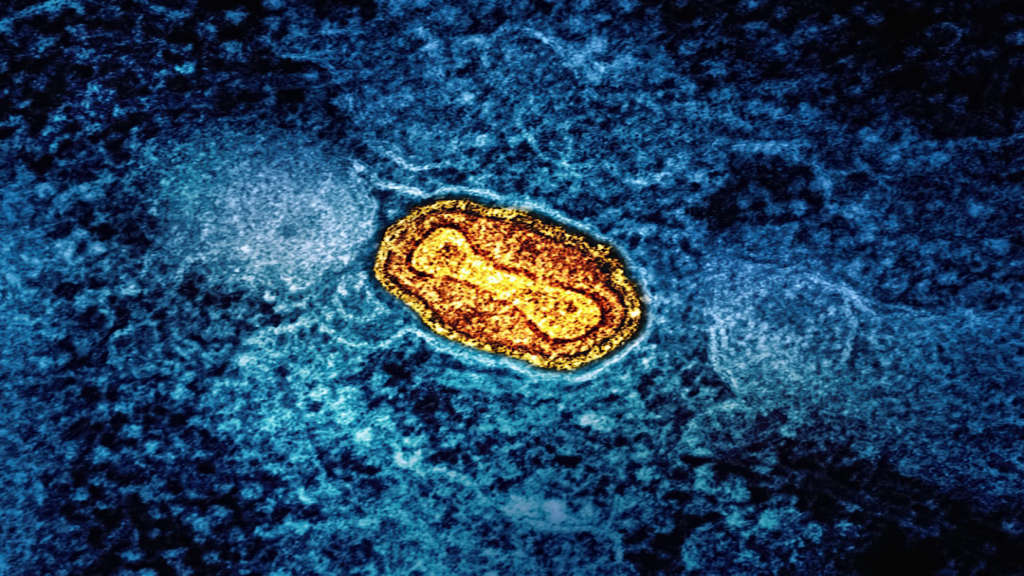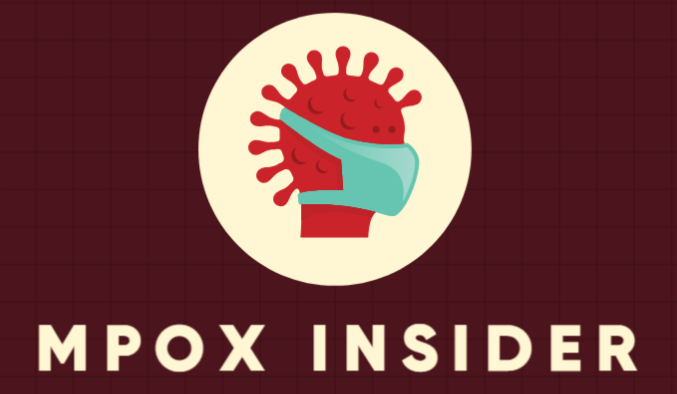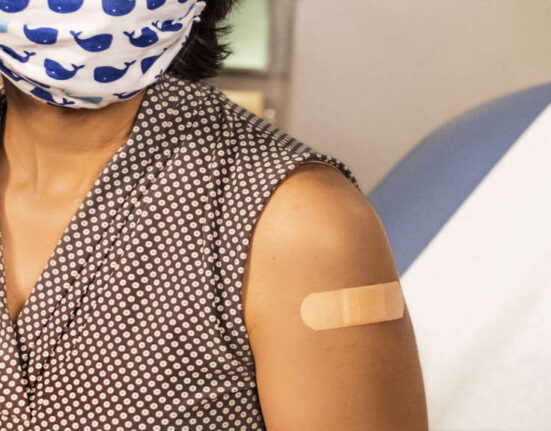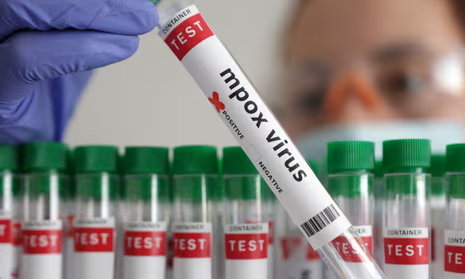In recent months, the emergence of Mpox has sparked growing concern among public health officials and communities worldwide. As an infectious disease that is relatively new to many, understanding its implications is critical for safeguarding global health. Mpox symptoms, which can be severe and distressing, highlight the importance of awareness and preventive measures. With this rise, questions surrounding Mpox prevention tips, Mpox treatment options, and even Mpox vaccine availability have become increasingly relevant. This blog aims to shed light on the circumstances surrounding Mpox, providing crucial information that can empower individuals to take informed steps to protect themselves and their loved ones.
Main Points
- Understanding the origins and spread of Mpox.
- Recognizing Mpox symptoms for early detection.
- Exploring effective Mpox treatment options available today.
- Reviewing Mpox prevention tips to mitigate risks.
- Examining the current state of Mpox vaccine availability.

What Is Mpox? Exploring the Characteristics of This Emerging Disease
The term Mpox may sound unfamiliar to many, yet it heralds an emerging disease that has recently garnered global attention. This illness, caused by a virus related to the childhood disease known as smallpox, raises significant public health concerns. It’s fascinating, and perhaps a bit concerning, how the world continues to confront the shadows of infectious diseases thought to be long eradicated. As we delve deeper into Mpox, it’s essential to shed light on its symptoms, transmission methods, and potential treatments.
Understanding the Symptoms of Mpox
The manifestations of Mpox can be rather perplexing. Initially, one might mistake its symptoms for those of other viral infections. Yet, being aware of these signs is crucial to promote early diagnosis and prevent further spread. The typical symptoms include:
- Fever: Often experienced during the early days, a sudden onset of fever can be misleading without accompanying symptoms.
- Rash: This is perhaps the most characteristic symptom, appearing days after the initial fever and evolving through various stages.
- Fatigue: A debilitating sense of exhaustion may accompany other symptoms, leaving individuals feeling particularly vulnerable.
Does it feel strange that such symptoms, albeit serious, can also coincide with common colds or other infections? This overlapping can create confusion. Because of this, vigilance is key.
Treatment Options Available for Mpox
When it comes to treating Mpox, the medical community is still piecing together the most effective approaches. The evolving nature of this disease means that recommendations can change, so staying informed is vital. Current treatment options include:
- Supportive Care: Most patients may require simply supportive treatment, which includes hydration and managing symptoms.
- Antiviral Medications: While specific antivirals for Mpox are still under investigation, some existing antivirals used for similar conditions may provide relief.
- Vaccination: The smallpox vaccine has shown effectiveness in preventing Mpox infections, thus highlighting the importance of vaccination in at-risk populations.
However, it’s crucial not to ignore potential complications, as some individuals may experience severe outcomes. This raises pertinent questions regarding public health practices and the preparedness of communities.
In conclusion, as we explore Mpox and its implications on health, we should maintain an open dialogue. This disease is not merely a footnote in history; rather, it serves as a reminder of the shared vulnerabilities we face. Keeping informed and engaged in discussions about its symptoms, treatment, and preventive measures is not just prudent; it’s an essential part of fostering a healthier future.

Understanding the Transmission Dynamics of Mpox: Key Factors and Pathways
The recent emergence of Mpox has raised significant concerns in public health circles. Understanding the transmission dynamics of this disease is crucial for developing effective prevention strategies. Several key factors play a vital role in how Mpox spreads among individuals, and examining these pathways can illuminate our next steps in combating the outbreak.
Key Factors Influencing Mpox Transmission
Mpox transmission occurs primarily through direct contact with infected individuals. However, many remain unaware of the less apparent modes of spread. For instance, shared objects, such as bedding or utensils, can also harbor the virus, leading to inadvertent transmission. This is particularly true in densely populated areas where Mpox can thrive amidst close physical interaction.
Additionally, the role of asymptomatic carriers cannot be understated. These individuals, while appearing healthy, can still transmit the virus. This complicates efforts to isolate infected persons, as the absence of obvious symptoms makes it difficult to identify who may pose a risk to others. Thus, heightened awareness is necessary to mitigate these hidden pathways of transmission.
Transmission Methods: A Closer Look
Understanding the various transmission methods is paramount for effective intervention. The primary modes include:
| Transmission Method | Description |
|---|---|
| Direct Skin Contact | Contact with rash or lesions of an infected person. |
| Airborne Particles | Transmission through respiratory droplets in close quarters. |
| Fomites | Infection through contaminated surfaces or objects. |
Each method highlights different challenges. For instance, controlling direct contact is vital but can be difficult in communal living situations. Moreover, the presence of fomites means that a thorough cleaning regimen is essential to reduce risk.
Preventive Measures Against Mpox
Equally important is the focus on prevention. Awareness of Mpox prevention tips is essential for individuals and communities. Simple actions, such as frequent handwashing, avoiding close contact with sick individuals, and maintaining good hygiene practices, can significantly reduce the risk of transmission.
Furthermore, the availability and dissemination of Mpox vaccine is another critical component in the fight against this virus. Vaccination can effectively lower the likelihood of transmission. Thus, public health efforts must prioritize education about the benefits of vaccination, ensuring that at-risk populations have access to immunization services.
Conclusion
In summary, the transmission dynamics of Mpox are multifaceted and influenced by various factors and methods. Understanding these pathways not only informs our approach to prevention but also emphasizes the need for collective action within communities. Progress hinges on our ability to navigate the complexities of transmission, ensuring that the public remains informed and prepared.
In conclusion, grasping the nature of Mpox transmission is not just a scientific challenge but a societal one. Each individual plays a role in safeguarding public health. Through education, awareness, and mutual support, we can create a healthier environment and diminish the threat posed by Mpox.

Mpox Symptoms and Diagnosis: Recognizing the Signs of Infection
As the world continues to grapple with various health crises, understanding emerging diseases has become more crucial than ever. The recent Mpox outbreak news has heightened the focus on this infection, bringing to light the importance of recognizing its symptoms and obtaining timely diagnoses. In this context, being informed can empower individuals to take appropriate actions and mitigate the spread of the virus. But what exactly should one look for?
Understanding the Symptoms
Initially, the symptoms of Mpox may appear deceptively mild, which can lead to confusion. The disease often starts with flu-like symptoms, which include fever, chills, and fatigue. However, these signs are just the opening act. As the infection progresses, a distinctive rash emerges, usually starting on the face and gradually spreading to other parts of the body. The rash can morph into fluid-filled blisters, and this transition might confuse many. One might ponder, is this a typical rash or something more sinister?
The rash is particularly important to monitor. If you notice any unusual skin changes alongside flu-like symptoms, do not brush them off as insignificant. This is where vigilance is key.
Diagnosis: The Path to Clarity
Compounding the challenge of identifying Mpox is the variable presentation of the symptoms. Clinicians often look for a combination of factors when making a diagnosis. Health professionals rely on a patient’s medical history, recent travels, and potential exposures to known cases. In some instances, laboratory tests may help confirm the diagnosis. It’s essential to remember that a timely diagnosis can significantly alter the course of the infection.
Many people hesitate to seek help due to the stigma surrounding infectious diseases. However, acting early is crucial; it can save lives and prevent the spread. Don’t let fear dictate your actions. Instead, prioritize your health and that of those around you.
What to Do if You Suspect Infection
If you suspect that you’ve contracted Mpox, remain calm but proactive. Reach out to a healthcare provider immediately. Describing your symptoms and any recent exposure can guide them in determining the best course of action. While it’s easy to second-guess oneself in these situations, remember that uncertainty should not deter you from seeking assistance. By doing so, you contribute to a larger effort in combatting the Mpox outbreak news and protecting your community.
In conclusion, being aware of the symptoms of Mpox and understanding the diagnostic process is vital. The more informed we are, the better equipped we become to handle such challenges. After all, knowledge is not just power; it’s a means of safeguarding our health and the well-being of those we care about. Don’t wait for clarification; take the initiative now!
The Role of Global Health Organizations in Mpox Surveillance and Response
In the ever-evolving landscape of public health, the emergence of infectious diseases often calls for a coordinated response from global health organizations. One such disease that has raised concerns in recent years is Mpox, a viral infection that poses unique challenges to healthcare systems worldwide. Given the complexities associated with mpox, the roles of organizations such as the World Health Organization (WHO) and the Centers for Disease Control and Prevention (CDC) are pivotal.
Understanding Mpox
Mpox, caused by the mpox virus, has demonstrated the ability to spread rapidly among populations. Its transmission can occur through direct contact with infected individuals or contaminated surfaces. This characteristic complicates both surveillance and response efforts. Thus, global health organizations have prioritized early detection and rapid containment.
Surveillance Mechanisms
Effective surveillance relies on timely data collection and analysis. Global health organizations employ a variety of strategies to monitor mpox outbreaks. These strategies include:
- Data Sharing: Organizations promote the sharing of epidemiological data across borders, allowing for a more comprehensive understanding of the outbreak’s trajectory.
- Community Engagement: By working with local communities, health organizations can enhance reporting rates and improve the accuracy of case identification.
- Capacity Building: Training healthcare professionals helps in recognizing mpox symptoms and understanding appropriate reporting protocols.
However, despite these efforts, challenges remain. Some regions experience underreporting due to stigma associated with the disease. Furthermore, limited access to healthcare can hinder surveillance in certain communities. Therefore, fostering a supportive environment is crucial.
Response Strategies
When it comes to responding to mpox outbreaks, global health organizations employ several strategies:
- Resource Allocation: Ensuring that affected regions receive the necessary medical supplies and personnel is essential for effective intervention.
- Public Awareness Campaigns: Educating the public about transmission routes and preventive measures can significantly reduce the spread of the virus.
- Collaboration with Local Health Authorities: Global organizations often work closely with local health departments to create tailored response plans based on the specific needs of the community.
Challenges and the Path Ahead
Despite the frameworks in place, obstacles continue to challenge mpox management. Limited funding, varying levels of health infrastructure, and political instability in some regions can disrupt coordinated responses. Therefore, it is essential for global health organizations to adapt their approaches, particularly in uncertain contexts.
Moving forward, a more refined approach to both surveillance and response is necessary. Organizations must embrace innovative technologies for real-time data collection and utilize novel communication strategies to engage communities. Ultimately, the fight against mpox hinges on collaboration, transparency, and an unwavering commitment to public health.
Conclusion
In conclusion, the role of global health organizations in mpox surveillance and response cannot be overstated. Their ability to monitor outbreaks, mobilize resources, and educate the public is critical in mitigating the impacts of this infectious disease. As we navigate the complexities of global health, fostering collaboration and agile response mechanisms will be vital in addressing future challenges.
Mpox and Public Health: Assessing the Risks and Challenges for Communities
In recent times, the emergence of Mpox has stirred concerns across various sectors, particularly in public health. This once-rare disease has transitioned into a focal point for health professionals and policymakers alike. The complexities surrounding Mpox pose significant risks and challenges that can impact vulnerable communities disproportionately. Understanding these dynamics is essential for fostering effective responses.
The Nature of Mpox
Mpox, formerly identified by another name, primarily manifests through symptoms that can often be confused with other conditions. The confusion surrounding its symptoms, such as fever and rash, opens the door to misdiagnosis. This, in turn, complicates timely treatment and public health interventions. Worse still, its infectious nature means it can spread rapidly, particularly within densely populated areas. The pathway of transmission often mirrors that of other communicable diseases, making containment efforts vital yet challenging.
Public Awareness and Education
An informed community is the backbone of effective public health. However, the prevalent misunderstandings about Mpox often leave individuals unprepared to recognize the signs or understand preventive measures. Many might find themselves overwhelmed by the barrage of information circulating in the media, leading to fear rather than informed action. Therefore, fostering clear and accessible educational resources becomes paramount. Local health authorities must engage in transparent dialogues that demystify the disease, rather than allowing misinformation to proliferate.
Challenges in Healthcare Response
Despite the well-intentioned efforts of healthcare providers, challenges abound in managing Mpox cases. Limited resources can hinder community health infrastructures. Moreover, the stigma associated with Mpox, primarily due to its transmission dynamics, can discourage individuals from seeking necessary medical attention. A societal reluctance to openly discuss the disease exacerbates these issues. This stigma acts as a barrier, isolating those affected and creating a ripple effect that threatens larger public health goals.
Community Engagement and Support
Building resilient communities requires active engagement from all stakeholders involved. Grassroots initiatives, led by community members who understand the nuanced dynamics of their locales, can provide tailored responses. Collaborative efforts between health officials and community leaders can bridge gaps in understanding and mobilize resources effectively. This partnership helps reduce the inherent risks posed by the spread of Mpox and facilitates timely interventions.
In conclusion, assessing the challenges associated with Mpox requires a multifaceted approach. Public health measures must encompass awareness, education, and a genuine effort to dispel stigma. Only then can communities feel fortified against this disease, turning fear into informed resilience. The journey ahead may be fraught with obstacles, yet with collaboration and understanding, we can build healthier futures for all.
Vaccine Development and Treatment Options for Mpox: A Comprehensive Overview
Mpox, previously known as monkeypox, has spurred significant concern within the global health community. As cases have surfaced, the urgency for effective vaccine development and treatment options has become more pronounced. In this article, we will delve into the current landscape of vaccines and treatments available for mpox. Understanding this is vital, particularly in light of the disease’s transmission and potential impacts on public health.
Understanding Mpox
Mpox is caused by the mpox virus, which is part of the orthopoxvirus genus. While often resembling smallpox, mpox symptoms can range from mild to severe, including fever, rash, and lymphadenopathy. Initial outbreaks have raised eyebrows, igniting discussions about its epidemiology and the effectiveness of existing medical interventions.
Vaccination Strategies
The development of vaccines against mpox has gained momentum in recent years. Historically, the smallpox vaccine, termed ACAM2000, has shown cross-protection against mpox. Despite this, the focus has now shifted towards more targeted and safer options.
| Vaccine Name | Status | Notes |
|---|---|---|
| JYNNEOS | Approved | Live attenuated vaccine |
| ACAM2000 | Used Sparingly | Older smallpox vaccine |
| Novel Candidates | In Development | Targeted at mpox specifically |
Researchers are actively exploring new candidates, particularly with an emphasis on best practices for safety and efficacy. The promising vaccine JYNNEOS has been highlighted for its ability to effectively mitigate the risk of mpox infection. However, some healthcare professionals express caution, noting that although vaccines can help, they may not be the silver bullet everyone hopes for.
Treatment Options for Mpox
When it comes to treatment, the options remain relatively limited. Antiviral medications such as tecovirimat (TPOXX) are gaining traction. This drug has shown promise against orthopoxviruses and has received approval under certain circumstances. Nonetheless, questions linger about its long-term efficacy and potential side effects.
“While we have treatments that can help control the symptoms and possibly reduce the duration of the illness, the most effective methods will still revolve around prevention through vaccination.” – Dr. Sarah Johnson, Infectious Disease Specialist
In addition to antivirals, supportive care remains crucial. Patients often require hydration, pain relief, and management of secondary bacterial infections. It’s a reminder that while scientists wear their lab coats and work diligently, empathy and support from the community are equally vital.
Conclusion
The ongoing challenges posed by mpox underscore the importance of robust public health initiatives. While vaccines and treatments are emerging, there remains a need for ongoing research and community awareness. As the landscape evolves, constant vigilance will be necessary to safeguard against this virus and its potential repercussions. Only through collective efforts can we hope to mitigate the challenges mpox presents to global health.
The Socioeconomic Impact of Mpox: How Emerging Infectious Diseases Affect Communities
As the world grapples with the ramifications of emerging infectious diseases, the recent surge of Mpox presents a unique set of challenges. Notably, it is not just a health crisis but also a socioeconomic upheaval that affects communities in profound ways. Understanding how Mpox impacts various aspects of society requires delving deeply into multifaceted issues.
Health Systems Under Strain
One of the most immediate effects of Mpox is on healthcare systems. Hospitals are overwhelmed due to the sudden influx of patients. This stress can lead to a deterioration in the quality of care. Nurses and doctors face burnout, affecting their ability to treat both chronic and acute conditions. The implications for public health are dire, as routine health services may be deprioritized. In addition, communities often witness a shift in healthcare priorities, raising questions about resource allocation.
Economic Disruption
Beyond healthcare, the economic landscape changes dramatically. Businesses, particularly in the tourism and hospitality sectors, suffer immensely. As people hesitate to gather in public spaces, the resultant decline in customer footfall can be staggering. The need for social distancing exacerbates this situation, creating a ripple effect throughout local economies.
- Unemployment Risks: Many small business owners may find it nearly impossible to keep their doors open, leading to increased unemployment rates.
- Supply Chain Challenges: Disruptions in global supply chains mean vital goods may not reach their destinations, affecting everything from grocery stores to hospitals.
- Market Volatility: Investors may react unpredictably to news surrounding Mpox, causing stock markets to fluctuate and creating uncertainty in financial planning.
Social Consequences
Moreover, social dynamics shift under the weight of emerging infectious diseases like Mpox. Communities can experience heightened anxiety and stigma, particularly against certain groups that may be disproportionately affected. Social connections may break down as fear takes precedence over familiarity. For example, people might avoid friends or neighbors who have recently traveled, despite the irrationality of such a response.
Lessons from Past Outbreaks
History has shown us the importance of a coordinated response in managing the impacts of diseases. Yet, the lessons from past outbreaks highlight the inconsistencies in how we recognize and address infectious diseases. Some communities bounce back relatively quickly while others languish in prolonged crises. The variance can often be attributed to factors such as:
- Resource Availability: Communities with better resources tend to recover faster than those without.
- Public Trust: Trust in health authorities can significantly influence compliance with health measures, affecting overall outcomes.
- Preparedness: Past preparedness levels will dictate how swiftly a community can respond to an outbreak.
In conclusion, the socioeconomic impact of Mpox is far-reaching. It transcends the immediate health concerns, weaving into the very fabric of community life. As we navigate these troubling waters, it becomes evident that understanding and preparation are critical. By fostering community resilience, perhaps we can mitigate the devastating effects of not just Mpox but future emerging infectious diseases as well.
Lessons Learned from Previous Outbreaks: Preparing for Future Mpox Threats
As we navigate the complexities of disease outbreaks, it is crucial to reflect on the lessons drawn from previous situations. The recent Mpox outbreak, while alarming, carries insights that can inform our preparedness for future threats. Learning from past experiences is not just a good practice; it is essential for public health and safety.
Understanding Historical Contexts
Many outbreaks have shaped our response systems. Notably, the SARS outbreak of 2003, the Ebola virus epidemic, and the H1N1 flu pandemic all exposed critical gaps in our preparedness. Each of these incidents brought unique challenges, yet they also highlighted common themes. For example, in the early stages of the SARS outbreak, confusion regarding transmission led to unnecessary panic. It’s a poignant reminder of how important clear communication is during health crises.
Effective Communication Strategies
During the Mpox outbreak, we observed both successes and failures in communication strategies. Timely and accurate information can curb misinformation and instill public trust. For instance, officials who utilized social media effectively reached younger demographics, while traditional media failed to engage them. Thus, we should embrace a multi-channel communication approach that adapts to diverse audiences.
The Role of Technology
Advancements in technology should not be overlooked. For example, data analytics played a pivotal role in tracking the spread of Mpox. However, reliance on technology can be double-edged. A heavy dependence on digital platforms might inadvertently exclude populations with limited access to technology. Hence, while leveraging tech is essential, we must also ensure inclusivity.
Investment in Public Health Infrastructure
Another lesson from previous outbreaks is the undeniable importance of investment in public health infrastructure. Countries that had robust healthcare systems fared better compared to those with less preparedness. A proactive approach, rather than a reactive one, allows for more efficient responses. Public health investments can range from better training for healthcare professionals to efficient vaccine distribution systems.
Community Engagement and Support
Moreover, the role of community in outbreak response is vital. Grassroots organizations often bridge gaps between health authorities and the public. They can disseminate crucial information, address concerns, and foster understanding. When communities feel empowered, they are more likely to engage with health recommendations seriously. It’s about building a sense of mutual responsibility.
Conclusion: Looking Ahead
In conclusion, preparing for future Mpox or any potential outbreak requires a comprehensive and multifaceted approach. By synthesizing lessons from prior experiences, we can enhance our readiness and resilience. It’s not solely about the systems we set in place; it’s also about the people we engage and the partnerships we cultivate. As we move forward, let us remember that each outbreak carries within it the seeds of change, urging us to grow stronger and smarter in our response.
| Lesson | Implication |
|---|---|
| Clear Communication | Foster trust and reduce misinformation. |
| Investment in Infrastructure | Enhance responsiveness and efficiency. |
| Community Empowerment | Increase public engagement and adherence. |
Ultimately, our success in mitigating health threats relies on how well we listen to the past. Each outbreak teaches us something new, but it is our responsibility to implement those lessons for a healthier future.
Mpox in the Context of Global Health Security: Policy Implications and Recommendations
The emergence of mpox, an infectious disease previously known as monkeypox, has presented a unique challenge to global health systems. The rapid spread and adaptation of this virus across various regions have sparked discussions about global health security and the need for robust policy frameworks. Understanding the broader implications of mpox is crucial for enhancing our preparedness against future pandemics.
A Growing Concern
Mpox has shifted from a relatively obscure illness to a significant public health concern within a short timeframe. This shift raises multiple questions about how effective our current health policies are in managing contagious diseases. The intricacies of mpox transmission pose unique challenges, as it does not discriminate – affecting diverse populations across various geographical landscapes. Thus, the need for a cohesive response becomes more critical than ever.
Policy Implications
Firstly, health policies must prioritize surveillance systems that are adaptable and inclusive. Real-time data collection and dissemination are necessary to understand the trends of mpox transmission. Local health authorities might face difficulties in identifying cases if they lack adequate resources, emphasizing the need for enhanced training and support.
Moreover, international cooperation is vital. No single country can manage a health crisis independently. For instance, sharing information about mpox outbreaks can bolster preparedness on a global scale. Collaborative efforts can ensure that countries with limited resources receive necessary support to combat the disease effectively. This brings us to the idea that funding strategies must align with emerging health threats, allowing for rapid mobilization when unexpected outbreaks arise.
Recommendations for the Future
So, what can be done? Firstly, enhancing community awareness about mpox is fundamental. Educating the public not only helps reduce stigma but also encourages people to seek medical attention early. Programs focusing on public health campaigns could make a significant difference in altering perceptions and promoting proactive health-seeking behaviors.
Secondly, investing in research to better understand mpox and its variants is essential. The scientific community plays a pivotal role in revealing the nuances of this virus. By understanding its biology, we can develop effective vaccines and treatments. For example, incorporating new technologies in vaccine development could accelerate the response during outbreaks. An interdisciplinary approach may yield innovative solutions that are both effective and accessible.
The Human Element
This situation also highlights the importance of human connection and empathy in health responses. Health officials must focus not only on stopping the virus but also on providing psychological support to affected individuals and communities. Acknowledging the fears and uncertainties that surround mpox can help in crafting more effective public health messaging.
In summary, addressing mpox within the framework of global health security involves more than just containment. It requires a multifaceted approach that emphasizes solidarity, preparedness, and education. Ultimately, collaborative global efforts, enhanced surveillance, and a commitment to continuous research will strengthen our resilience against not only mpox but also future infectious disease threats.
The Importance of Public Awareness and Education in Combating Mpox Spread
In the face of emerging health threats, especially infectious diseases, public awareness and education play pivotal roles. The recent incidents surrounding Mpox have underscored how crucial it is for communities to stay informed. When people lack adequate information, confusion often arises, leading to stigma and a reluctance to engage in essential health measures. This highlights an urgent need for increased public awareness and comprehensive educational initiatives.
Understanding Mpox: A Brief Overview
Before diving into the significance of public awareness, we should clarify what Mpox is. Recognizing its symptoms and mode of transmission can significantly alleviate fears and misconceptions. Mpox is largely characterized by:
- Rash: A distinct skin rash that appears in varying stages.
- Fever: Often the first sign, leading many to seek medical attention.
- Fatigue: A common yet under-discussed symptom that can linger.
Thus, understanding these symptoms ensures that individuals act promptly, minimizing unchecked spread.
Why Public Awareness Matters
Awareness serves as a fundamental weapon against the spread of Mpox. Without it, instances of transmission can escalate rapidly. Here’s why awareness is vital:
- Reducing Stigma: When misinformation circulates, people often feel shame surrounding their health. Public campaigns that educate on Mpox help dismantle these misconceptions.
- Promoting Preventive Measures: Simple practices, such as maintaining hygiene and understanding how the virus spreads, can drastically lower infection rates.
- Encouraging Testing and Treatment: Knowledge empowers individuals to seek help without fear, ensuring early detection and management.
Each of these factors contributes to community health and showcases how indispensable education is in combating the spread of Mpox.
Implementation of Educational Programs
To foster a culture of awareness, we must implement educational programs that reach everyone—regardless of age or background. Here are some strategies that could be effective:
- Workshops: Interactive sessions can engage the community, offering firsthand information and dispelling myths.
- Social Media Campaigns: Utilizing platforms where people already spend their time can effectively spread accurate information quickly.
- Partnership with Healthcare Providers: Collaborations can enhance credibility and ensure that accurate information reaches those who need it most.
Such strategies are not just about presenting facts; they are about creating an environment where people feel safe to ask questions and seek help.
Conclusion
As we navigate the challenges posed by Mpox, we must recognize the intrinsic value of public engagement and education. By fostering understanding, reducing stigma, and encouraging proactive health measures, we empower communities. The importance of awareness cannot be overstated—it is a crucial component in the fight against the spread of Mpox. Therefore, let’s collectively commit to spreading knowledge and ensuring that our communities remain informed and resilient.
Related content:
Understanding Mpox Measures: Strategies for Effective Public Health Response
Unraveling the Mystery: What is Mpox and Why It Matters
Unlocking Solutions: The Latest Advances in Mpox Treatment
Tracing the Footsteps of Mpox: A Journey Through Its Historical Landscape
You Can Also Review These:
Unraveling Monkeypox: An Emerging Threat in Global Health – PMC







